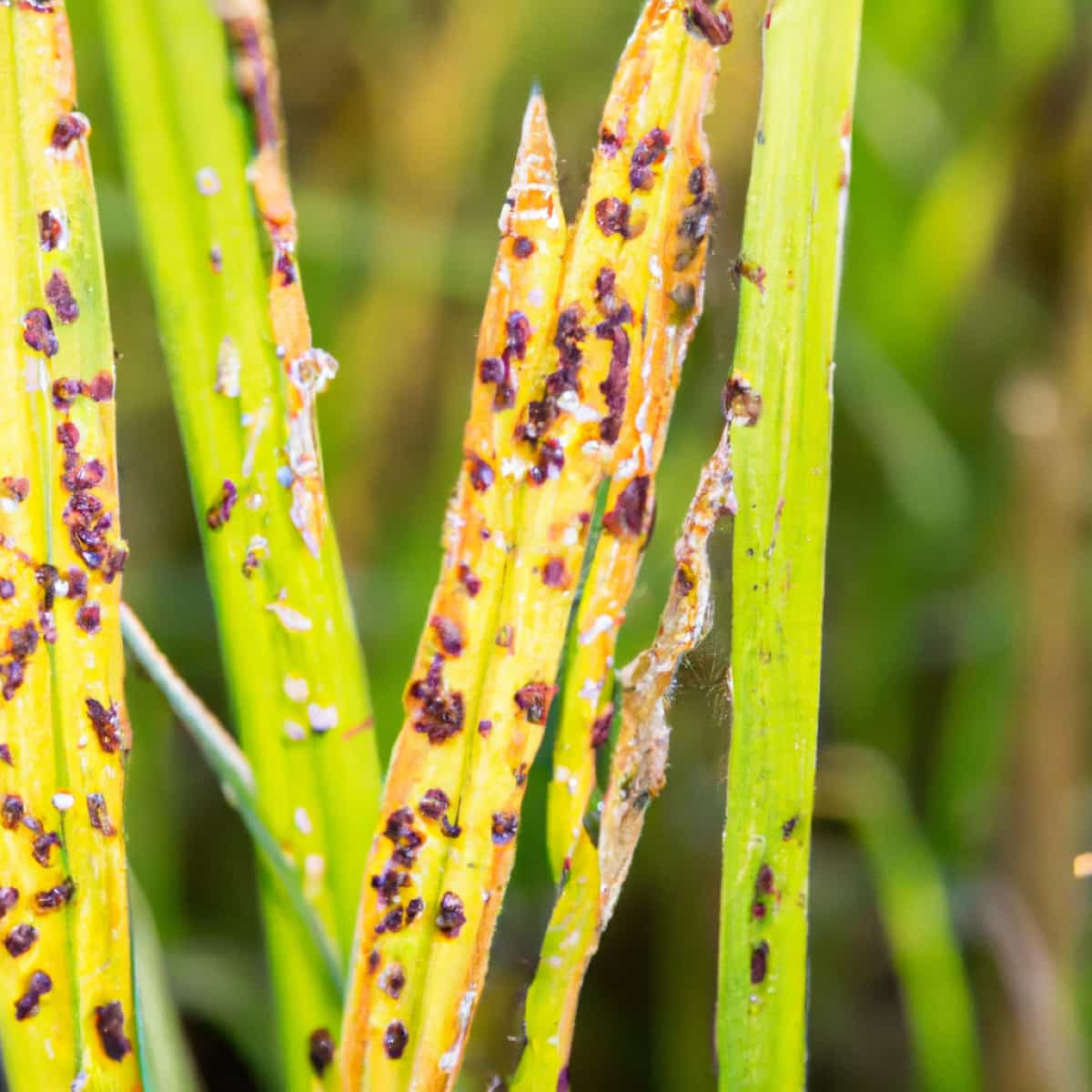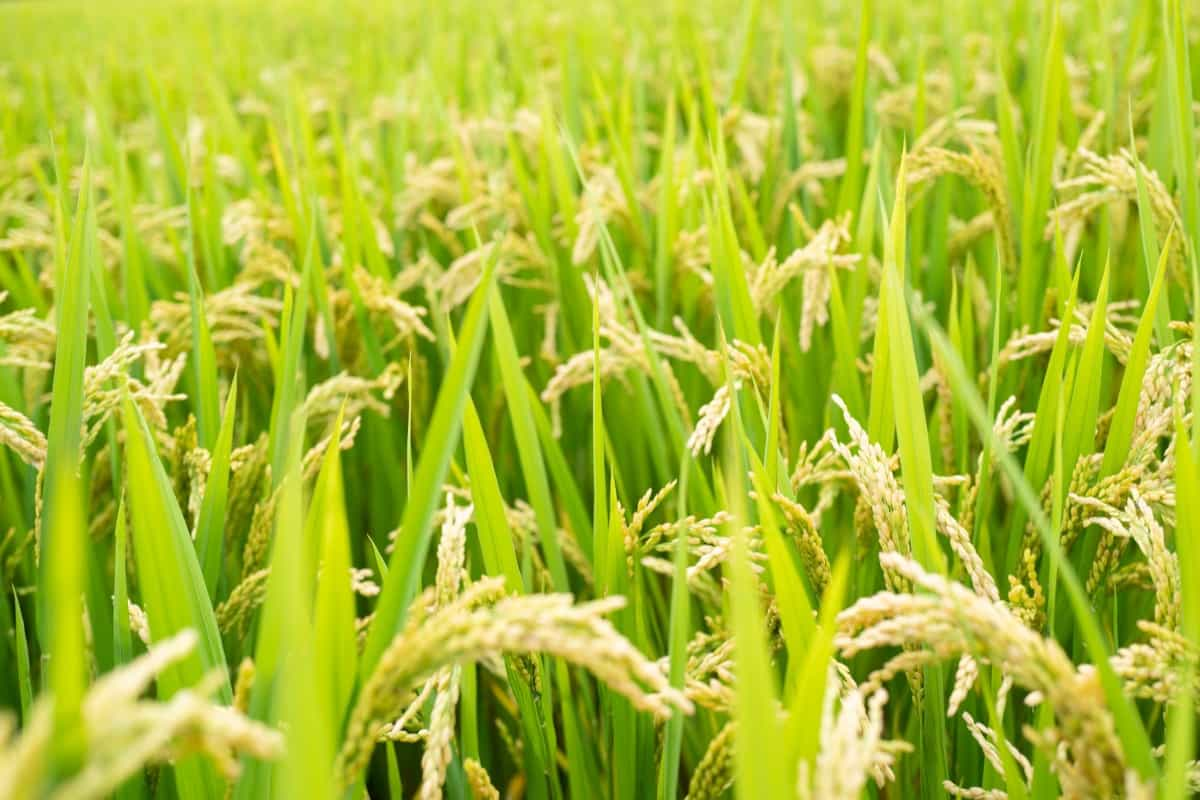Rice Brown Spot is a fungal disease caused by the pathogen Bipolaris oryzae that affects rice. It damages rice plant leaves, stems, and grains and severely limits global rice production. The disease causes round to elongated brown lesions on the leaves and stems, which can cause premature defoliation and lower grain production. Both seedlings and fully grown plants are susceptible to the fungal disease known as brown spots.

This disease manifests in a more severe form in places with inadequate management. The loss of yield of between 50 and 90 percent was the primary cause of the “Bengal Famine” in 1942, which resulted in the deaths of 2 million people. In India, epidemics were responsible for a loss of between 14 and 41% of HYVs. It is widespread in inadequate and poor soils (Poor man’s illness).
Rice Brown Spot management in Paddy
The causal organism of Rice Brown Spot
Brown leaf spot, caused by the fungus Helminthosporium oryzae, develops from seedling to maturity and can result in up to 50-90% yield loss in extreme situations. Digitaria sanguinalis, Leersia hexandra, Echinochloa colona, Pennisetum typhoides, Setaria italica, and Cynodon dactylon are all collateral hosts for the illness. The pathogen is transmitted through wind and can be the source of infection from seed, collateral hosts, rice straw, or stubble.
The disease cycle of Brown Spot of Rice
- Infected seeds and stubbles are the primary sources of infection for Helminthosporiose, also known as the fungal blight that causes brown leaf spots in rice.
- The fungus may live on them for two to three years, and it can spread its conidia through the air. Conidia move to their greatest extent at wind speeds of 4.0 to 8.8 hours under ideal conditions of low temperatures of 27 to 28 C, relative humidity of 90 to 99%, and rainfall of 0.4 to 14.4 mm.
- Additionally, the fungus can survive on unrelated hosts, including Leersia hexandra and Echinochlora colonum. It emphasizes how crucial it is to get rid of contaminated stubbles and prevent the development of collateral hosts to lower the chance of infection.
Favorable conditions for the spread of Brown Spot disease in the Paddy field
- Temperatures range from 25 to 30 degrees Celsius
- (>90%) relative humidity
- The arrival of Heavy north-east monsoon rains in the late season.
- Cloudy and humid weather
- Excess nitrogen enhances disease incidence.
- For infection to occur, the leaves must be damp for 8-24 hours.
Symptoms of Rice Brown Spot disease in Paddy
- The disease begins as minute brown specks and progresses to cylindrical, oval, or circular shapes. (similar to sesame seed)
- Spots with a width of 0.5 to 2.0mm congregate to create huge patches.
- The leaf then dries up as many spot areas congregate.
- Infection also appears on the panicle and throat in a brown color.
- Seeds are also infected (black or brown patches on glumes are covered by olivaceous velvety growth). Seedlings perish, and damaged nurseries may frequently be identified from afar by their brownish-burned look.
- Glumes might also develop dark brown or black patches.
- Plant infection causes seed failure, seedling death, and grain quality and weight loss.
- In extreme circumstances, the yield is reduced by 50%.
In case you missed it: Stem Rot Disease Management in Paddy: Symptoms, Treatment, Chemical, Biological, Natural, and Organic Control

Percentage of yield loss due to Brown Spot Disease in Paddy crop
- The Brown spot fungus disease attacks the paddy crop from nursery seedling to the main field’s milk stage.
- In extreme cases, it can result in 50-90% yield loss. This fungal disease affects the crop from seedling in the nursery to the milk stage in the main field, appearing as brown spots that resemble sesame seeds and can grow to 0.5-2mm in breadth.
- Lowland rice cultivation in South and Southeast Asia faces an average yield loss of 5%, with severe infections causing up to 45% yield loss. The disease also causes seedling blight, which results in 10-58% seedling mortality, influences grain quality and quantity, and lowers kernel weight.
Rice Brown Spot disease management in Paddy by cultural methods
- Use disease-free seeds
- Remove alternate and collateral hosts
- Use resistant varieties available
- Provide proper nutrition and prevent water stress for optimum plant growth
- Avoid planting in low-fertility rice soils
- Amend soils low in plant-available silicon with calcium silicate slag before planting and ensure adequate irrigation to avoid water stress.
Rice Brown Spot disease management in Paddy by biological methods
Seed treatment with Pseudomonas fluorescens at 10g/kg. Seedling dip with 2.5 kg of product/ha in 100 liters of water. Dip seedlings for 30 minutes.
Rice Brown Spot Disease management in Paddy by chemical methods
- Seed soak/treatment with Captan or Thiram at 2.0g/kg
- Spray Mancozeb (2.0g/lit) or Edifenphos (1ml/lit) 2-3 times at 10-15 day intervals, preferably during early hours or afternoon at flowering and post-flowering stages.
- Seed treatment with Agrosan or Ceresan 2.5g/kg to prevent seedling blight stage
- Spraying with copper fungicides to control the secondary spread
- Antibiotics such as Griseofulvin, Nystatin, and Aureofungin for primary seedling infection prevention
- Seed treatment with fungicides such as Captan, Thiram, Chitosan, Carbendazim, or Mancozeb to reduce seedling infection
- Seed treatment with Tricyclazole followed by spraying of Mancozeb + Tricyclazole at tillering and late booting stages
Rice Brown Spot disease management in Paddy by organic/natural methods
Twice, spray 20% fresh cow dung extract (starting from the initial appearance of the disease and another at fortnightly intervals). Sheath rot, Brown spot, sheath blight, grain discoloration, and bacterial blight are all controlled using neem oil 60 EC 3% (or) NSKE 5%.
In case you missed it: Rice Blast Disease Management in Paddy: Symptoms, Treatment, Chemical, Biological, Natural, and Organic Control

Preventive measures for control of Brown Spot disease
- Use of resistant varieties
- Appropriate plant nutrition application
- Minimize water stress
- Appropriately cultivation operations
- Hot water seed treatment at 53-54°C for 10-12 minutes to control primary infection at the seedling stage
- Increase the effectiveness by presoaking the seed in cold water for 8 hours.
Conclusion
Rice brown spot disease is a significant problem in paddy production, causing yield losses and affecting seedling growth and grain quality. Management of the disease involves a combination of cultural methods, such as using disease-free seeds and resistant varieties, providing proper nutrition, and avoiding water stress, and chemical methods, such as seed treatment with fungicides and hot water treatment.
Antibiotics and copper fungicides can also be used to prevent and control the spread of the disease. Natural and organic methods, such as seed treatment with bacteria and presoaking in cold water, can also enhance the effectiveness of disease management.
- Deworming Schedule for Dogs/Puppies: A Beginners Guide
- How to Prevent and Control Parasites in Goats
- Beneficial Insects in Pest Management
- Natural Solutions for Pest Control in Flower Gardens
- Types of Fungicides Used in Agriculture
- Common Issues in the Fruit Development Stage of Pomegranate Farming
- Fruit Development Issues in Papaya: Easy Solutions and Treatment
- Soil-Borne Diseases and How to Protect Your Plants
- Practices to Prevent Disease Spread in the Garden
.